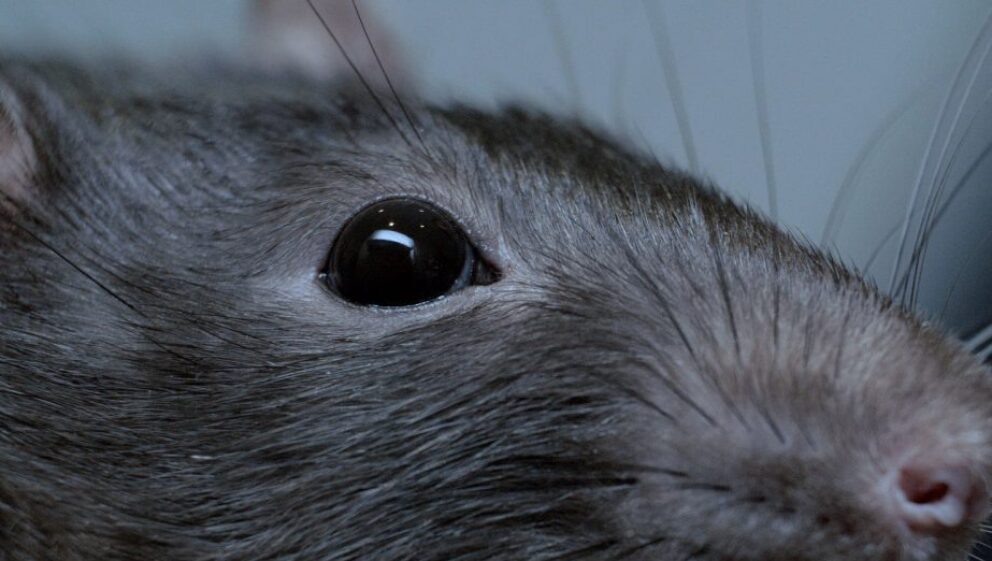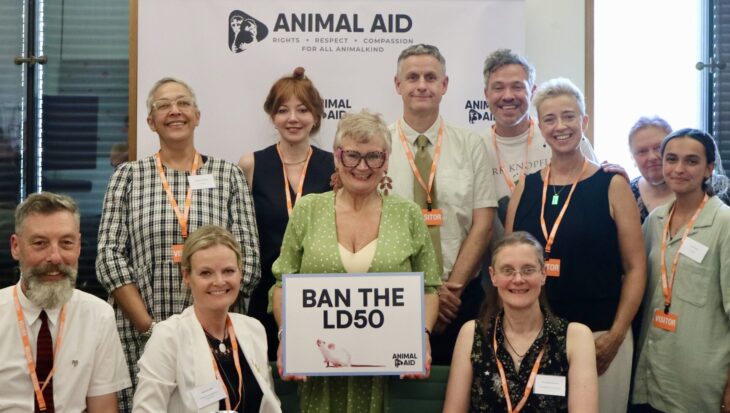Animal Aid today reveals more grotesque warfare experiments on living animals.
These experiments, described as ‘Rat Blunt Ocular Injury Model’, and conducted at the University of Birmingham, were found in a paper published in 2019. (1)
The experiments involved:
- Numerous rats, the number is unclear, being anaesthetised. They were then shot in one or both eyes with a plastic pellet, fired at 20 metres per second. This is equivalent to almost 45 mph. This is described as causing ‘extensive loss of retinal function’
- One group of animals were shot in both eyes and then immediately given an injection into their eyeballs. One eye was injected with Nec-1s (the substance being assessed) in a carrier liquid and the other eyeball was injected with just the carrier liquid. A week later, the animals were given identical injections, again directly into their eyeballs. A fortnight after the initial shooting, these animals were anaesthetised, their bodies pumped with chemicals which killed them and their eyes removed and analysed.
- Other animals were shot in one or both eyes. They were killed at different points up to 48 hours after being shot and their eyes were removed and analysed.
- Some albino animals were killed and their eyes removed so certain cells could be removed and mixed with different concentrations of Nec-1s, and analysed.
Nec-1s is known to affect the death of cells, so this why it was injected into the animals’ eyes.
The barbarity of these experiments is obvious. Animal Aid’s concerns are further increased because:
- There is no mention of the animals being given any painkillers, despite being shot directly in their extremely sensitive eyes. Anyone who has ever received an eye injury will know, even small ones can be excruciatingly painful. (Since we highlighted this experiment, an Animal Aid supporter who contacted Dstl, Porton Down, has been informed that pain relief was given to the animals and the injections were administered under a general anaesthetic.)
- The researchers do not mention any behaviour changes in the animals. Clearly, any change in the animals’ vision would have been very distressing for them, especially if both eyes had been injured and they had suffered ‘extensive loss of retinal function’ in addition to pain.
The data gathered from animal experiments cannot be reliably translated to humans. One reason for this is the multitude of differences between humans and animals, these include:
- There are differences between the eyes of humans and those of rats – rats do not have a macula and humans do. (2) The macula is the central part of the retina, important for clear vision.
- The lenses of rats’ eyes occupy about two-thirds of their eye cavity (3). In humans the lens occupies a much smaller area.
- A paper which compared various animals, including rats, used in glaucoma research stated ‘each has its own disadvantages and drawbacks, especially with regard to differences in eye anatomy and morphology in comparison with humans’. (4)
- A 2012 paper, which had two authors in common with the paper analysed above, reviews the animal ‘models’ of retinal injury and states ‘Much animal research is directed at understanding and modifying these pathologies, although results have yet to translate into clinical practice’. (5)
The researchers’ explanation for these experiments is that this type of injury ‘can cause visual loss in military and civilian populations’ (1). However, it is known that ‘All soldiers are issued with polycarbonate spectacles and goggles for eye protection…but a low proportion were documented as wearing it at the time of injury’ (6)


